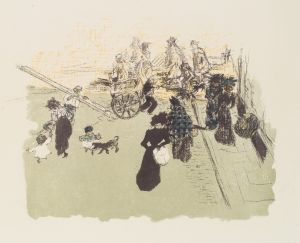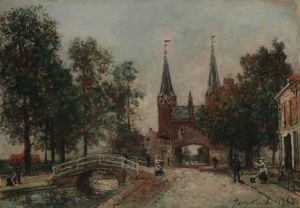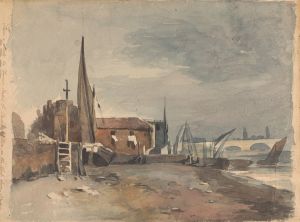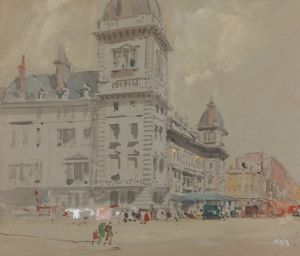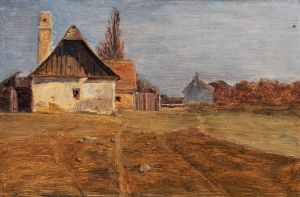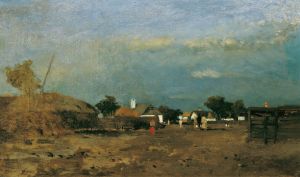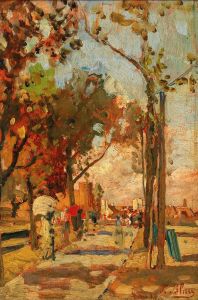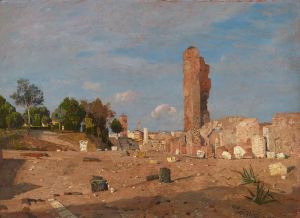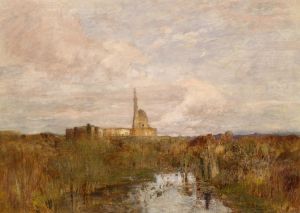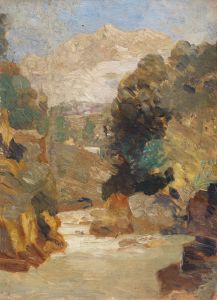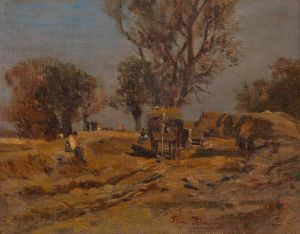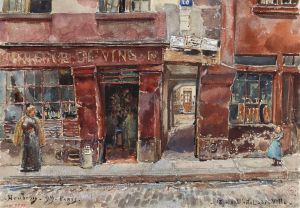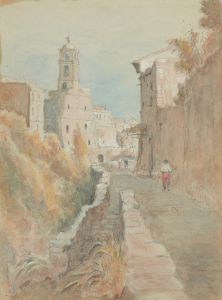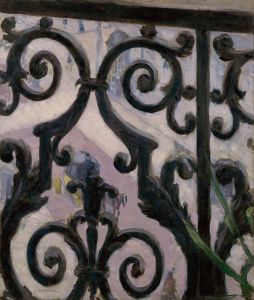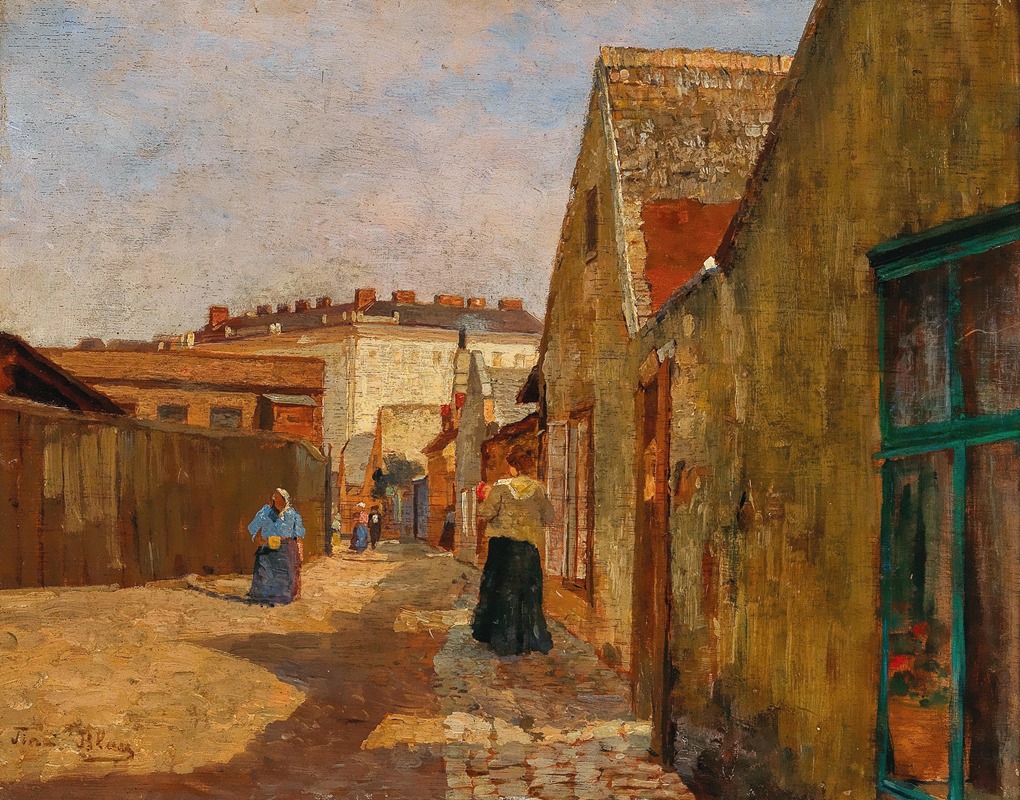
A Dead-End Street in Vienna-Erdberg
A hand-painted replica of Tina Blau’s masterpiece A Dead-End Street in Vienna-Erdberg, meticulously crafted by professional artists to capture the true essence of the original. Each piece is created with museum-quality canvas and rare mineral pigments, carefully painted by experienced artists with delicate brushstrokes and rich, layered colors to perfectly recreate the texture of the original artwork. Unlike machine-printed reproductions, this hand-painted version brings the painting to life, infused with the artist’s emotions and skill in every stroke. Whether for personal collection or home decoration, it instantly elevates the artistic atmosphere of any space.
Tina Blau, an Austrian landscape painter, created the artwork "A Dead-End Street in Vienna-Erdberg" in 1883. Blau was a prominent figure in the Austrian art scene and one of the few successful female artists of her time. She was associated with the Austrian mood impressionism movement, which emphasized capturing the atmosphere and light of a scene.
"A Dead-End Street in Vienna-Erdberg" is a notable example of Blau's ability to depict urban landscapes with a keen sense of realism and attention to detail. The painting portrays a quiet, unassuming street in the Erdberg district of Vienna, an area known for its working-class population during the late 19th century. Blau's choice of subject reflects her interest in everyday scenes and her ability to find beauty in the mundane aspects of city life.
The composition of the painting is carefully structured, with the street leading the viewer's eye into the distance, creating a sense of depth and perspective. The use of light and shadow is particularly striking, as Blau captures the subtle play of sunlight on the buildings and the street. Her palette consists of earthy tones, which lend the scene a warm, inviting quality. This attention to the effects of light and atmosphere is characteristic of Blau's work and highlights her skill in rendering the transient qualities of nature and urban environments.
Blau's technique in this painting demonstrates her mastery of plein air painting, a method she adopted after studying in Munich and being influenced by the Barbizon School. This approach involved painting outdoors to capture the natural light and colors of a scene directly. "A Dead-End Street in Vienna-Erdberg" exemplifies this technique, as Blau likely painted it on-site, allowing her to observe and reproduce the nuances of the setting accurately.
The painting also reflects Blau's progressive views on art and society. As a woman artist in a male-dominated field, Blau faced numerous challenges but remained committed to her craft. She was a founding member of the Vienna Secession, an art movement that sought to break away from traditional academic art and embrace new, innovative styles. Blau's work, including "A Dead-End Street in Vienna-Erdberg," contributed to the broader acceptance of impressionism and modern art in Austria.
Throughout her career, Tina Blau received recognition for her contributions to art, and her works were exhibited in numerous prestigious venues. Her ability to capture the essence of her surroundings with sensitivity and precision earned her a respected place in the history of Austrian art. "A Dead-End Street in Vienna-Erdberg" remains an important piece that showcases her talent and dedication to portraying the world around her with authenticity and grace.





